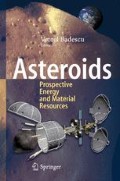Abstract
Currently, climate change is a significant threat to our way of life, with global mean temperatures predicted to increase by 1.1-6.4oC by the end of the century (IPCC 2007). This increase is driven by multiple factors, with the main contributors being the increasing concentrations of Greenhouse Gases (GHG), mainly CO2, CH4 and N2O, in the atmosphere, which is altering the Earth’s current energy balance and therefore the present climate. The current consensus within the scientific community is that the dominant factor in the changing climate of the Earth is the anthropogenic emission of GHG’s, with the probability of this being true termed "very likely" (90% probability) by the IPCC (IPCC 2007). Whilst the main effort within the global community should be to control climate change by reducing our emissions of GHG’s, it is prudent to investigate other methods of managing the climate system. The field of deliberately manipulating the Earth’s climate is called geoengineering, or climate engineering.
Access this chapter
Tax calculation will be finalised at checkout
Purchases are for personal use only
Preview
Unable to display preview. Download preview PDF.
References
Angel, R.: Feasibility of cooling the Earth with a cloud of small spacecraft near the inner Lagrange point (L1). Proceedings of the National Academy of Sciences 103, 17184–17189 (2006)
Bewick, R., Sanchez, J.P., McInnes, C.R.: The feasibility of using an L1 positioned dust cloud as a method of space-based geoengineering. Advances in Space Research 49, 1212–1228 (2012a)
Bewick, R., Sanchez, J.P., McInnes, C.R.: Gravitationally bound geoengineering dust shade at the inner Lagrange point. Advances in Space Research 50, 1405–1410 (2012b)
Bewick, R., Lücking, C., Colombo, C., Sanchez, J.P., McInnes, C.R.: Heliotropic Dust Rings for Earth Climate Engineering. Advances in Space Research 51(7), 1132–1144 (2013)
Binzel, R.P., Rivkin, A.S., Thomas, C.A., Vernazza, P., Burbine, T.H., DeMeo, F.E., Bus, S.J., Tokunaga, A.T., Birlan, M.: Spectral properties and composition of potentially hazardous Asteroid (99942) Apophis. Icarus 200, 480–485 (2009)
Bowell, E., Hapke, B., Dominique, D., Lumme, K., Peltoniemi, J.I., Harris, A.W.: Application of photometric models to asteroids. In: Asteroids II. University of Arizona Press (1989)
Brophy, J., Culick, F., Friedman, L.: Asteroid retrieval feasibility study. Keck Institute for Space Studies (2012)
Colombo, C., Lücking, C., McInnes, C.R.: Orbital Dynamics of High Area-to-Mass Ratio Spacecraft with J2 and Solar Radiation Pressure for Novel Earth Observation and Communication Services. Acta Astronautica 81, 137–150 (2012)
Early, J.T.: Space-based Solar Shield to Offset Greenhouse Effect. Journal of the British Interplanetary Society 42, 567–569 (1989)
Govindasamy, B., Caldeira, K.: Geoengineering Earth’s radiation balance to mitigate CO2-induced climate change. Geophysical Research Letters 27, 2141–2144 (2000)
Govindasamy, B., Caldeira, K., Duffy, P.B.: Geoengineering Earth’s radiation balance to mitigate climate change from a quadrupling of CO2. Global and Planetary Change 37, 157–168 (2003)
Ingle, J.D.J., Crouch, S.R.: Spectrochemical Analysis. Prentice Hall (1988)
IPCC, Contribution of Working Groups I, II and III to the Fourth Assessment Report of the Intergovernmental Panel on Climate Change, IPCC, Geneva (2007)
Jacobson, M.Z., Ten Hoeve, J.E.: Effects of Urban Surfaces and White Roofs on Global and Regional Climate. Journal of Climate 25, 1028–1044 (2012)
Mautner, M.: A Space-based Solar Screen against Climatic Warming. Journal of the British Interplanetary Society 44, 135–138 (1991)
McInnes, C.R.: Space-based geoengineering: challenges and requirements. Proceedings of the Institution of Mechanical Engineers, Part C: Journal of Mechanical Engineering Science 224, 571–580 (2010)
de Pater, I., Lissauer, J.J.: Planetary Sciences. Cambridge University Press (2001)
Pearson, J., Oldson, J., Levin, E.: Earth rings for planetary environment control. Acta Astronautica 58, 44–57 (2006)
Raven, J., Caldeira, K., Elderfield, H., et al.: Ocean acidification due to increasing atmospheric carbon dioxide. Royal Society, Science Policy Section (2005)
Robock, A., Marquardt, A., Kravitz, B., Stenchikov, G.: Benefits, risks, and costs of stratospheric geoengineering. Geophysical Research Letters 36, L19703 (2009)
Sanchez, J.P., McInnes, C.R.: Asteroid Resource Map for Near-Earth Space. Journal of Spacecraft and Rockets 48, 153–165 (2011)
Sanchez, J.P., McInnes, C.R.: Accessibility of the resources of near Earth space using multi-impulse transfers. In: 2010 AIAA/AAS Astrodynamics Specialist Conference, Toronto (2010)
Shepherd, J., Caldeira, K., Cox, P., Haigh, J.: Geoengineering the climate. Report of Royal Society working group of geo-engineering (2009)
Struck, C.: The feasibility of shading the greenhouse with dust clouds at the stable lunar Lagrange points. Journal of the British Interplanetary Society 60, 82–89 (2007)
Teller, E., Wood, L., Hyde, R.: Global warming and ice ages. I. Prospects for physics-based modulation of global change. In: Proc. 22nd Int. Seminar on Planetary Emergencies, Erice, Italy, August 19-24 (1997)
Wilck, M., Mann, I.: Radiation pressure forces on “typical” interplanetary dust grains. Planetary and Space Science 44, 493–499 (1996)
Willson, R.C., Hudson, H.S.: The Sun’s luminosity over a complete solar cycle. Nature 351, 42–44 (1991)
Author information
Authors and Affiliations
Editor information
Editors and Affiliations
Rights and permissions
Copyright information
© 2013 Springer-Verlag Berlin Heidelberg
About this chapter
Cite this chapter
Bewick, R., Sanchez, JP., McInnes, C.R. (2013). Usage of Asteroid Resources for Space-Based Geoengineering. In: Badescu, V. (eds) Asteroids. Springer, Berlin, Heidelberg. https://doi.org/10.1007/978-3-642-39244-3_25
Download citation
DOI: https://doi.org/10.1007/978-3-642-39244-3_25
Publisher Name: Springer, Berlin, Heidelberg
Print ISBN: 978-3-642-39243-6
Online ISBN: 978-3-642-39244-3
eBook Packages: EngineeringEngineering (R0)

